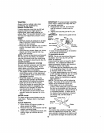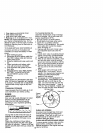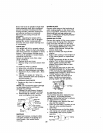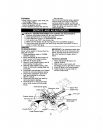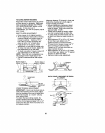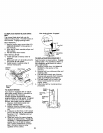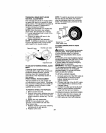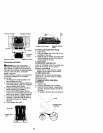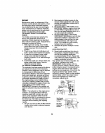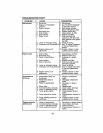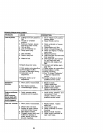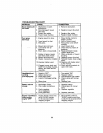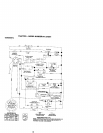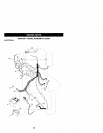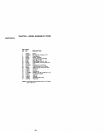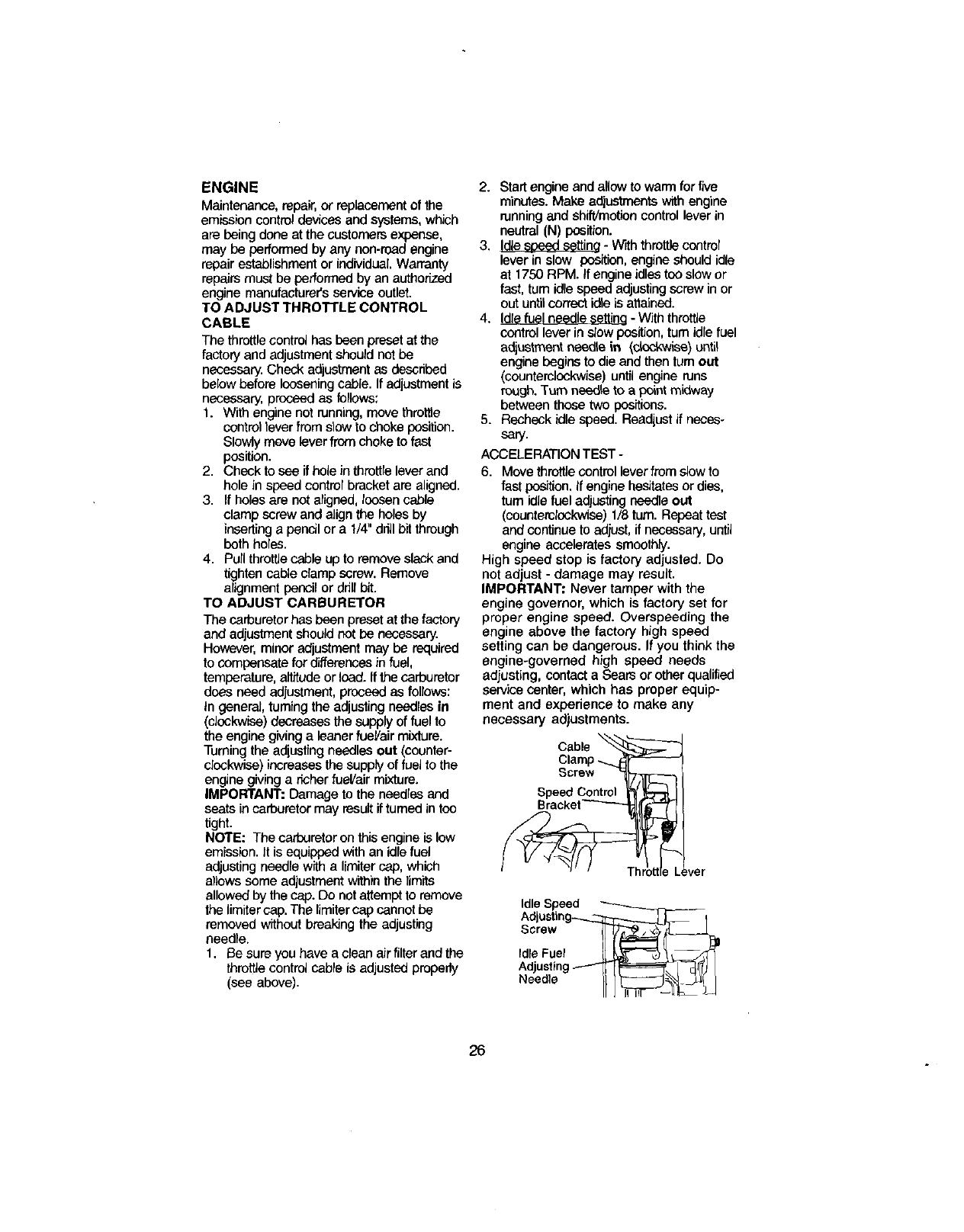
ENGINE
Maintenance, repair, or replacement of the
emission control devices and systems, which
are being done at the customers expense,
may be performed by any non-read engine
repair establishment or individual. Warranty
repairs must be performed by an authorized
engine manufacturer's service outlet.
TO ADJUST THROTTLE CONTROL
CABLE
The throttlecontrolhasbeen preset at the
factoryand adjustmentshould notbe
necessary. Check adjustment as described
below before loosening cable. If adjustment is
necessary, proceed as follows:
1. With engine not running, move throttle
control lever from slow to choke position.
Slowly move lever from choke to fast
position.
2. Check to see if hole in throttle lever and
hole in speed control bracket are aligned.
3. If holes are not arigned, loosen cable
clamp screw and align the holes by
insadleg a pencil or a 1/4" drill bit through
both holes.
4. Pull throttle cable up to remove slack and
tighten cable clamp screw. Remove
alignment pencil or ddlf bit.
TO ADJUST CARBURETOR
The carburetor has been preset at the factory
and adjustment should not be necessary.
However, minor adjustment may be required
to compensate for differences infuel,
temperature, aififude or load. If the carburetor
does need adjustment, proceed as follows:
In general, turning the adjusting needles in
(dockwisa) decreases the supply of fuel to
the engine giving a leaner fueVair mixture.
Turning the adjusting needles out (counter-
clockwise) increases the supply of fuel to the
engine giving a richer fueVair mixture.
IMPORTANT: Damage to the needles and
seats in carburetor may result if turned in too
tight.
NOTE: The carburetor on this engine is low
emission. It is equipped with an idle fuel
adjusting needle with a limiter cap, which
allows some adjustment _Vrth)nthe limits
allowed by the cap. Do not attempt to remove
the limiter cap. The rimitercap cannot be
removed without breaking the adjusting
needle.
1. Be sure you have a clean air tilter and the
throttle control cable is adjusted properly
(see above).
2. Stad engine and allow to warm for five
minutes. Make adjustments with engine
running and shift/motion control lever in
neutral (N) posiflen.
3. Idle soeed setting - With throttle control
lever in slow position, engine should idle
at 1750 RPM. Ifengine idles too slow or
fast, turn idle speed adjusting screw in or
out until correct idle is attained.
4. Idle fuel needle setting - With throttle
control lever in slow position, turn idle fuel
adjustment needle in (ck:_'k-,Mse)until
engine begins to die and then fum out
(counterclockwise) until engine runs
rough. Ture needle to a point midway
between those two positions.
5. Recheck idle speed. Readjust if neces°
sery.
ACCELERATION TEST -
6. Move throttle osntrol lever frem slew to
fast position. If engine hesitates or dies,
turn idle fuel adjusting needle out
(counterclockwise) 1/8 turn. Repeat test
and continue to adjust,if necessary, until
engine accelerates smoothly.
High speed stop is factory adjusted. Do
not adjust - damage may result.
IMPORTANT: Never tamper with the
engine governor, which is factory set for
proper engine speed. Overspeeding the
engine above the factory high speed
setting can be dangerous. If you think the
engine-governed high speed needs
adjusting, contact a Sears or other qualified
seniJce center, which has proper equip-
ment and experience to make any
necessary adjustments.
Cable _ _
Clamp
Screw
Speed Centrol
Bracket---'-'-'-"
ver
Idle Speed
Adjusting_ t
Screw
IdleFuel II_ _,,____S(-/
Adjusting ----'-_ fp_i_'._ I_ f-[_)
.eed,o
26



